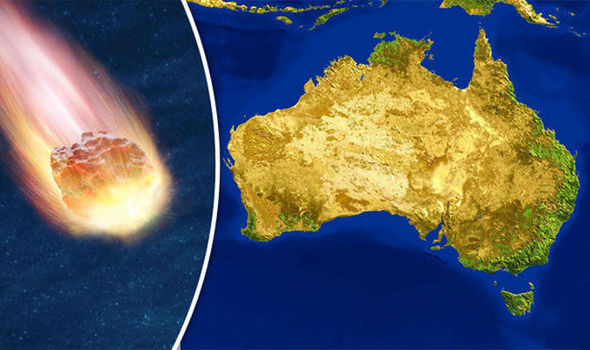
Aussies Recover Two Meteors In Just Two Weeks, Shattering Record.
Share
Two searing hot rocks from the outer reaches of space came hurtling into the desert outback.
And thanks to our Aussie Desert Fireball Network (DFN) we didn't miss a single second of the action.
The DFN is our camera system that stretches across the outback to monitor any falling asteroid activity and accurately predict where they might land.
Waiting for asteroids to fall out of the sky is about as silly as it sounds. And to date, only about 40 have been recovered since the 1950s.

But thanks to the DFN, we just saw and recovered two in as many weeks.
The Desert Fireball Network (DFN) is a network of Aussie cameras that track meteoroids entering our atmosphere for much more accurate attempts at recovery.
Its made up of 50 autonomous cameras, spread across Western Australia and South Australia covering 2.5 million sqaure km and is so successful there is a current project for a global network.
The DFN cameras capture approximately 30 second exposures of the sky from dusk until dawn every night, with automatic alerts if a fireball or meteor is detected. Based on the long-exposure images, a lot of the legwork in calculating where meteors will fall is taken care of and a fall line is made that shows where meteorites might be on Earth.

Using the DFN, Astronomer Dr Hadrien Devillepoix recalls seeing a bolide (a large and bright meteor that explodes in the atmosphere) that lead them to stumble across it after returning to their vehicle outside Madura, Western Australia.
Thanks to the DFN, the researches predicted the course of the object and made their way to the area. However, after giving up on finding the impact site with a drone, they accidentally stumbled upon while heading back to the car.
“I thought Anthony was playing a prank on me, that he planted one of the fake meteorites we were using for the drone training session. But after a closer inspection, it was evident that the fist-sized, 1.1-kilogram [2.4-pound] rock we just found was indeed the meteorite we were after” says Dr Devillepoix.

As it turns out, the rock was part of the Aten cluster of asteroids that usually orbit close to Venus.
A second rock was found to weeks later by Dr Martin Towner while searching for a meteor that crashed on November 18 of last year.
After four hours of searching in the Nullarbor Plain, the party retrieved the 300-gram rock. His team estimate it comes from the middle section of the asteroid belt, with analysis underway to learn more.

Miss our latest product drop?New "Worm" ARSE hats are live...We've already sold out of beanies at the time of writing, so snap up one of these lids to spread ARSE now!Cheers guys,
Clintern#Space_Aus




